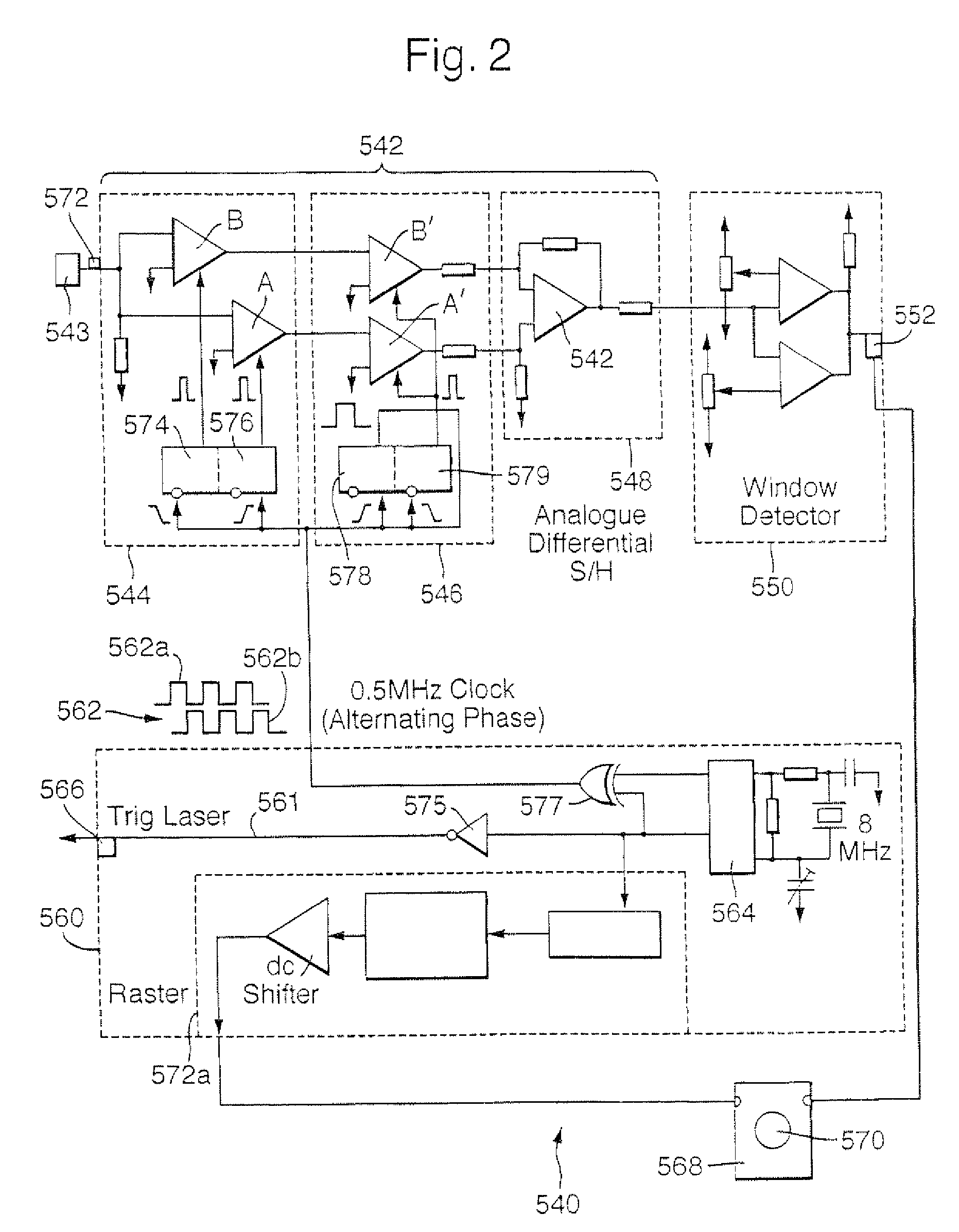Evaluating the position of a disturbance
a technology detecting disturbances, which is applied in the field of evaluating the position of disturbances, can solve the problems that the known optical time domain reflectometry (otdr) techniques are not well suited to detecting time-varying disturbances and corresponding (albeit attenuated or modified) disturbances
- Summary
- Abstract
- Description
- Claims
- Application Information
AI Technical Summary
Problems solved by technology
Method used
Image
Examples
Embodiment Construction
Estimating the Position of a Disturbance
[0033]The monitoring station 12 includes an optical pulse source 18 with a short coherence time (random phase changes in the output providing an irregular component to the signal), the pulse source being driven by a driver unit. Pulses from the optical source 18 are fed to an interferometer stage 20, here a Mach Zhender interferometer with a first path 24 and a second path 26, the paths 24, 26 being coupled at each end by a respective first and second coupling stage 28, 30. For light travelling in the outbound direction, the first coupling stage 28 acts as a directional power (intensity) splitter, channeling light from the optical source 18 to each of the paths 24, 26, the power to each path being shared in a predetermined manner (here, the first coupling stage acts as a 50:50 power splitter, although a different ratio could be used).
[0034]The monitoring station 12 includes an optical pulse source 18 with a short coherence time (random phase c...
PUM
 Login to View More
Login to View More Abstract
Description
Claims
Application Information
 Login to View More
Login to View More - R&D
- Intellectual Property
- Life Sciences
- Materials
- Tech Scout
- Unparalleled Data Quality
- Higher Quality Content
- 60% Fewer Hallucinations
Browse by: Latest US Patents, China's latest patents, Technical Efficacy Thesaurus, Application Domain, Technology Topic, Popular Technical Reports.
© 2025 PatSnap. All rights reserved.Legal|Privacy policy|Modern Slavery Act Transparency Statement|Sitemap|About US| Contact US: help@patsnap.com



